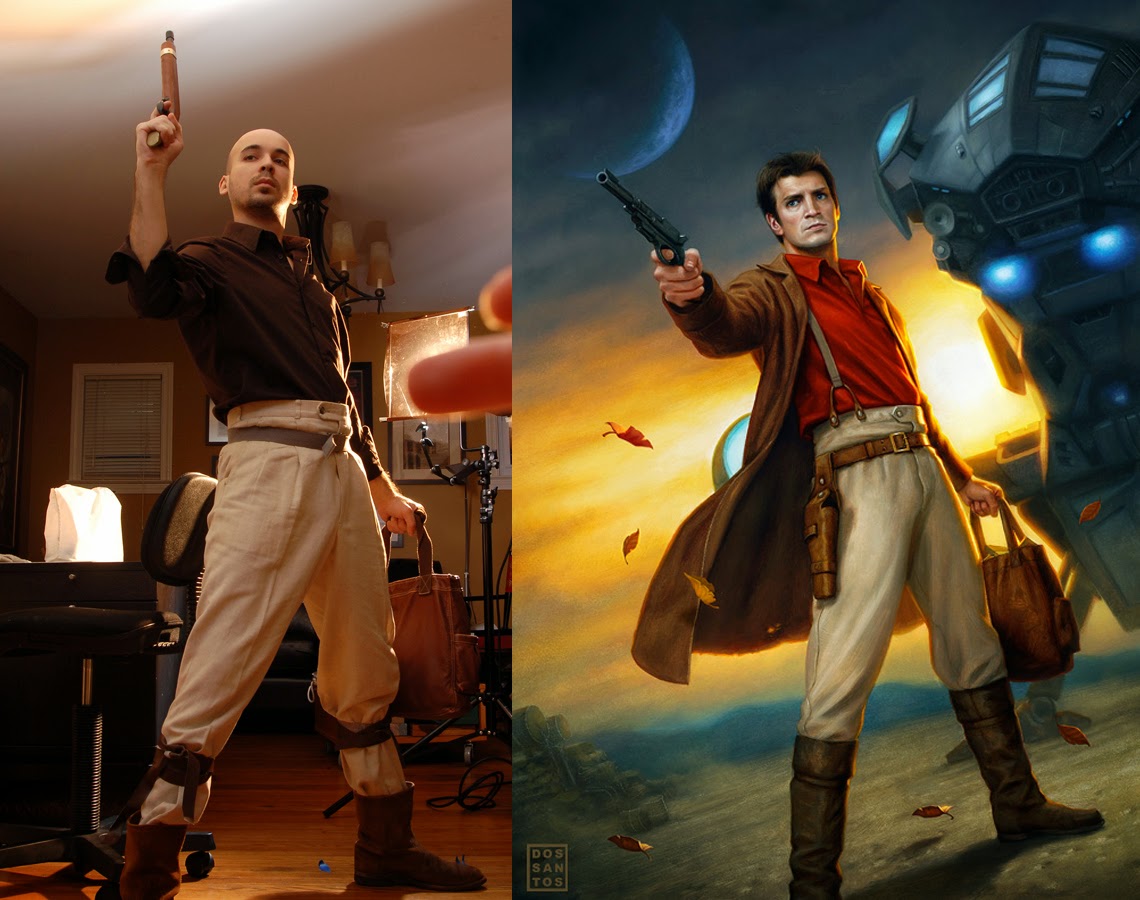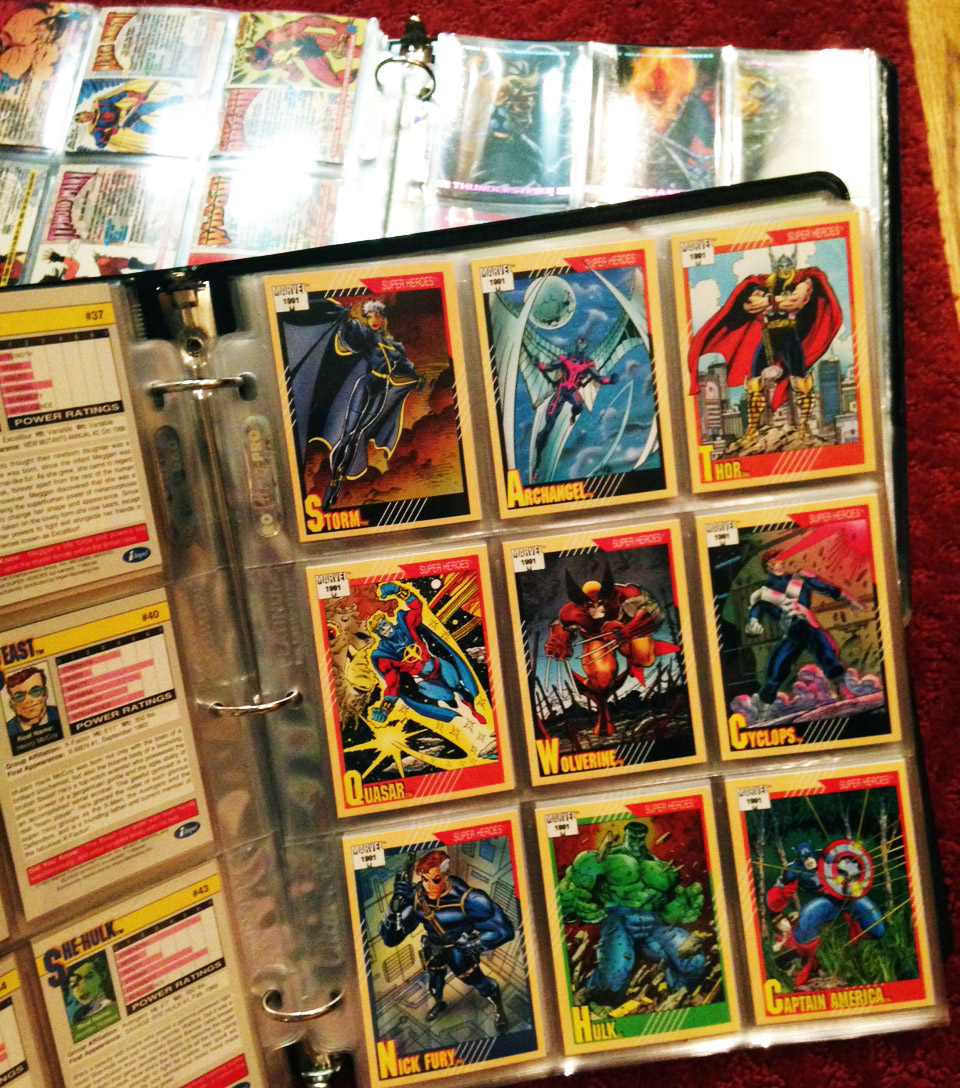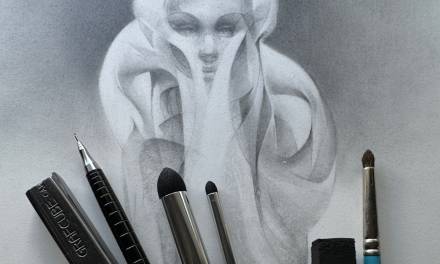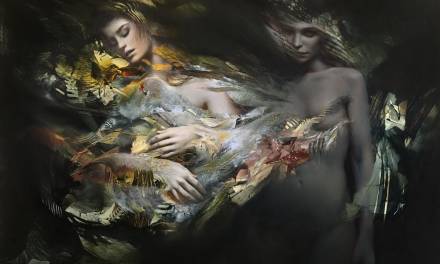Dan & I are the same age, and we pretty much had the same childhood influences, pop-culture wise. All Voltron and the Thundercats and He-Man and early 90s X-Men. So he couldn’t wait to show me his recent nostalgia purchase:
I hadn’t seen any of these Marvel card sets for ages, but as soon as I saw them I immediately remembered every line of most of these cards (especially the Jean Grey ones), because I had spent hours and hours copying them obsessively. It was the same for Dan, he remembered copying some of his favorite cards dozens of times until it was perfect. His sons do the same thing to their Pokemon cards now, and we got into an interesting discussion about whether that intense copying behavior was an early marker of a future artist. I still have a notebook from 7th or 8th grade that’s full of nothing but these drawings. (And one of these days I’ll get around to doing a group post on childhood art and you can all laugh at them.)
If you’re an artist that has had traditional training, you know that there is a long history of “master studies” where you are encouraged to learn by copying a work of art by a master stroke by stroke. People used to get special passes to set up easels in museums to make a copy, and in today’s digital world it’s easy to track down hi-res copies of masterworks to paint from. People also copy film stills to study composition. There are things you can only learn by doing with your hands, not just appreciating with your eye and mind. It’s also a common hallmark of a recently-graduated artist to still have a portfolio where you can pretty much tell who their top 3 influences are. It takes a while for your hand to intake and assimilate many styles, until it gels into a unique style of your own.
This is a common—if not universal—stage of an artist’s career, so I have been surprised lately to be getting a lot of questions about whether it is unethical for artists to study and copy other artists’ work. Some people feel that this is somehow cheating. It’s absolutely not. Just like a musician learns important classical works before they can compose on their own, it is absolutely part of the learning process to practice drawing and painting by copying. With one caveat: just be sure to label it a master copy anywhere it is posted (social media, your website, etc.) and never take mistaken credit for the work.
Since I’m away from home and can’t scan embarrassing old work right now, Dan offered up one of his Rob Liefeld moments from about age 13 he estimated:
 |
| Hell of a lot better than I was doing at age 13. |
This kind of learning-by-imitation is not only common amongst artists and musicians, there’s also many cases of writers copying out famous novels either in longhand or by typing out, so they can really feel the rhythm of the prose. While Hunter S. Thompson worked at Time magazine, he supposedly spent most of his time copying The Great Gatsby and parts of Hemingway and Faulkner.
Here’s what he said about the practice:
“If you type out somebody’s work, you learn a lot about it. Amazingly it’s like music. And from typing out parts of Faulkner, Hemingway, Fitzgerald – these were writers that were very big in my life and the lives of the people around me – so yea I wanted to learn from the best I guess.”
While we’re on the topic of copying, let’s also put aside any crazy ideas that using reference photos is “cheating” as well. The overwhelming majority of professional artists use reference – whether it’s live models or reference photos. As you know if you’ve seen my infamous Artist Selfies post, many artists even use themselves as reference in a pinch.
 |
| Since I’m at Dan’s studio writing this, here’s one of his reference photos. |
And here’s a collection of Norman Rockwell’s illustrations next to his reference photos:
So hopefully I’ve put this particular issue to rest. Not only is it not unethical for an artist to copy and use reference, it’s absolutely encouraged! Especially if you are an artist who is not following the traditional art school route. No matter where you are at in your career and your skill level, taking the time to copy and learn from other artists is always worth the time.










Hello. Thank you for posting this very timely, and informative article. I was left with a couple of lingering questions: “Is it appropriate to have master copy work (properly labelled of course) in a portfolio?” and “If my 'style' is similar to an already published 'style', is there a need to differentiate, or cite the influences?” Thanks again for all the helpful advice you contribute to this page.
I love how, even at 13, Dan subconsciously realized Rob was putting way too many teeth in those mouths!
Love this post! As a teenager I spent a lot of time copying xenomorphs from my Alien comics. I still have those drawings. Good memories. And no, there's nothing wrong with copying. It's a learning tool!
I did this as a child as well, but with Wizard Of Oz books. I tried to draw Ozma over and over, but all my drawings looked more like Steve Buscemi with Blooming Onions glued to the sides of his head.
Sadly all those drawings were lost.
It did give me a life long apriciation of good ink work though.
Ha! I was just commenting to Lauren how many more teeth Rob's drawing had. Good eyes.
I would have loved to have seen those. 😀
I wouldn't put master copies in your portfolio – no one is going to hire you to do a master copy, and those 10-12 pieces in your portfolio should show what you want to be hired to do. However, if you have a blog section, or process, or sketches, that's totally a good place to put it. or just share on social media.
Ugh. Liefeld's teeth, his feet, his hair, his entire women…ugh.
exactly.
I second that.
This older post goes well with this post also.
http://muddycolors.blogspot.com/2011/04/flattery-will-get-you-everywhere.html